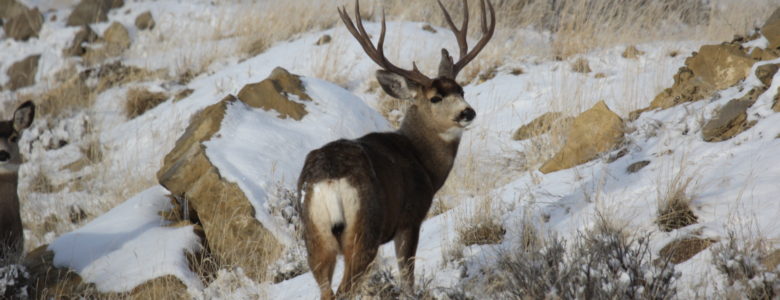What constitutes mule deer habitat?
Mule deer are adaptable to different food sources and living in different environments.
If you asked mule deer biologists in the Sonoran Desert, they would tell you something completely different than someone in the panhandle of Idaho. As would someone from the Arizona strip, the Badlands of Montana/North Dakota, the Sandhills of Nebraska, or the Wasatch Front of Utah.
These are all areas where mule deer live. They all have very different habitats. So how is it that a species which seems to be in trouble from a habitat standpoint can live in these vastly different, ecologically diverse areas?
In general, mule deer are a very adaptable species in their distribution across the west. We can find them in 18 different states, four Canadian provinces and in Mexico. The habitat they use spans seven different eco-regions.
They have been documented eating hundreds of different plants and plant parts such as cactus, bark, fruit, vegetables, grasses, forbs, shrubs and trees. They can find thermal and escape cover in grasslands, sagebrush, rocks, thickets of brush and trees, and in back yards.
As such, a mule deer’s habitat in-and-around Eagle Mountain is limited. Houses are not habitats, but yards, gardens and open space can be. Therefore, a habitat on a small and fragmented scale has been created in the city.
There are several areas where we have year-round residents who have adapted nicely to eating and living among homes and people. They seem to do well at navigating within these neighborhoods. This is a greater problem along much of the Wasatch front where you have year-round resident urban mule deer populations.
Ideally, mule deer around Eagle Mountain should migrate from the Oquirrh Mountains and Camp Williams through the city south to the Lake Mountains.
Mule deer habitats must consist of three important components: food, water and cover/shelter.
How the food, water and cover is arranged on the landscape; what is adjacent to it; how far away are they from each other; and what condition each of the three are in are all equally important.
Arguably, the most critical component of mule deer habitat is food.
Mule deer can make it without water for a few days. Much of their water can be gleaned from the food they eat. We know that cover can be in a wide-open field if needed. What, then, constitutes mule deer food?
It has been demonstrated through studies that mule deer need, and do best with, food that is high in protein, easily digestible and readily available. Again, this varies from place to place but most of these groceries can be considered, or are found in, areas where plant communities are in an early successional stage.
In Eagle Mountain, a plethora of green groceries (grasses and forbs) that are high in nutrients, easy to digest, very accessible and perfect for what mule deer locate are found. They are a much-needed resource for does, fawns and bucks to grow antlers. Across the west, too many of the vegetative communities have reached climax stage where there’s no overgrown revegetation.
Once vegetative communities reach climax stage, they are not very good for mule deer or many other species other than from a cover standpoint. Additionally, they become vulnerable to catastrophic fire where large tracks of land are burned.
Wildlife agencies can’t continue status quo with our mule deer habitat. It’s not good for mule deer for so much of the habitat to reach climax stage. There needs to be diversity and many different successional stages found across the landscape.
Close work must be conducted with our land managers who can slowly start to identify issues, define goals, objectives, and implement actions and strategies to make changes. These changes will take time and even longer to see changes in mule deer numbers.
Next time you are out in your neck of the woods, ask yourself what is missing from this particular mule deer habitat? What was once here in abundance that is not there now? What are the causes of this change? What can be done to improve the situation?
Only by understanding what the needs are and what can be done from a practical standpoint can we work to really improve, restore, and conserve mule deer habitats.


